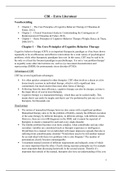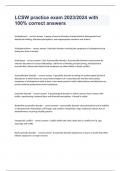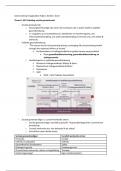Samenvatting
Summary CBI - Extra literature
- Instelling
- Universiteit Leiden (UL)
This document contains a detailed summary of the extra literature for the CBI course. It discusses; • Chapter 1 – The Core Principles of Cognitive Behavior Therapy (O’Donohue & Fisher, 2012). • Chapter 2 – Clinical Functional Analysis: Understanding the Contingencies of Reinforcemen...
[Meer zien]











